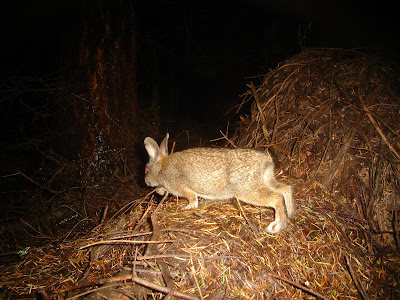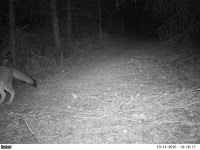kinda like this, but not really?
This summer during the Camera Trap Workshop, our sensei spoke to us about the camera trap blues. The woes of failing to get a particular animal, equipment malfunctioning in the field, camera trapper brain farts, and so on.
I got my first true dose this morning with a visit to the Marin sets.
First, a fiesty hack refused to download images. Then, a second hack's board broke just before it was reset. One more camera was remaining. It was another hack in a location that had promises of Puma and had previously delivered lovely bobcat and gray fox shots. (The Bushies were good children and complied with no issues.)
The wind began to stir as my lovely assistant and I picked up our pace. Our empty stomachs were projecting dreams of the picnic awaiting us upon the final check.
Other wild thoughts had entered my head. A record of the mountain lion would surely erase the days bummer! What about... the legendary MARIN BLACK BEAR? HAHAH YES.
"Where is it?"
"Uhh... should be right here."

No camera.
The post it was attached to was strewn to the side.
The effects of recent heavy wind and rain could be seen nearly every step of our journey. Rockslides, branches, trees fallen to the ground in what appeared to be a casual destruction.
It is possible the camera case could have become dislodged and disappeared down a nearby a ravine. A search failed to turn up the camera.
Or a human nabbed it. The camera post showed few marks (thus eliminating the fantasy of the MARIN BLACK BEAR destroying and removing the camera). The rocks supporting the post also were rather neatly in place. With all of the storm's destruction, this was a spot of relative calm.
Pretty low class if this is indeed the case. Hope you enjoy it, bro, along with a case of scabies.
Here is a happy bunny picture for the rest of you!






















